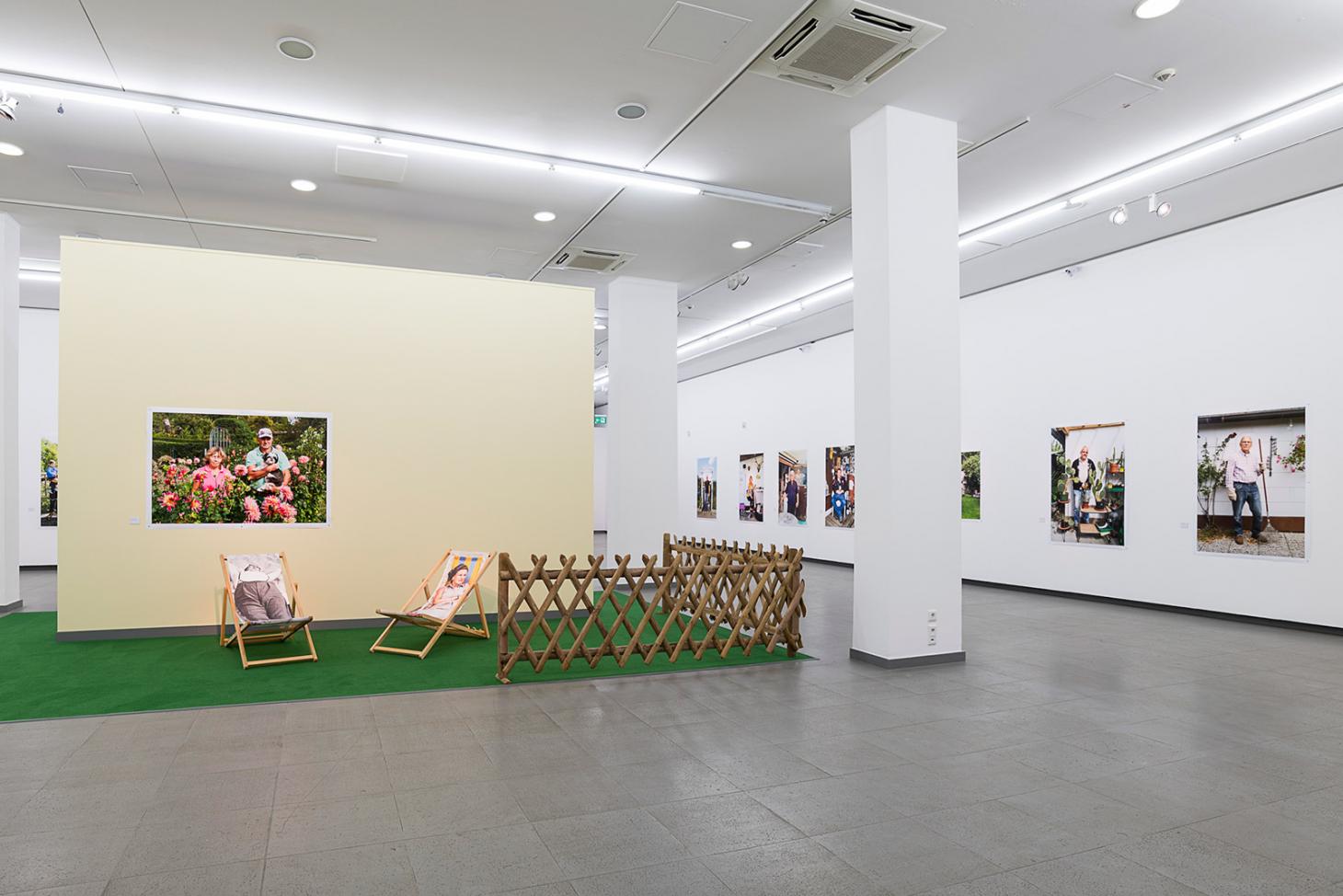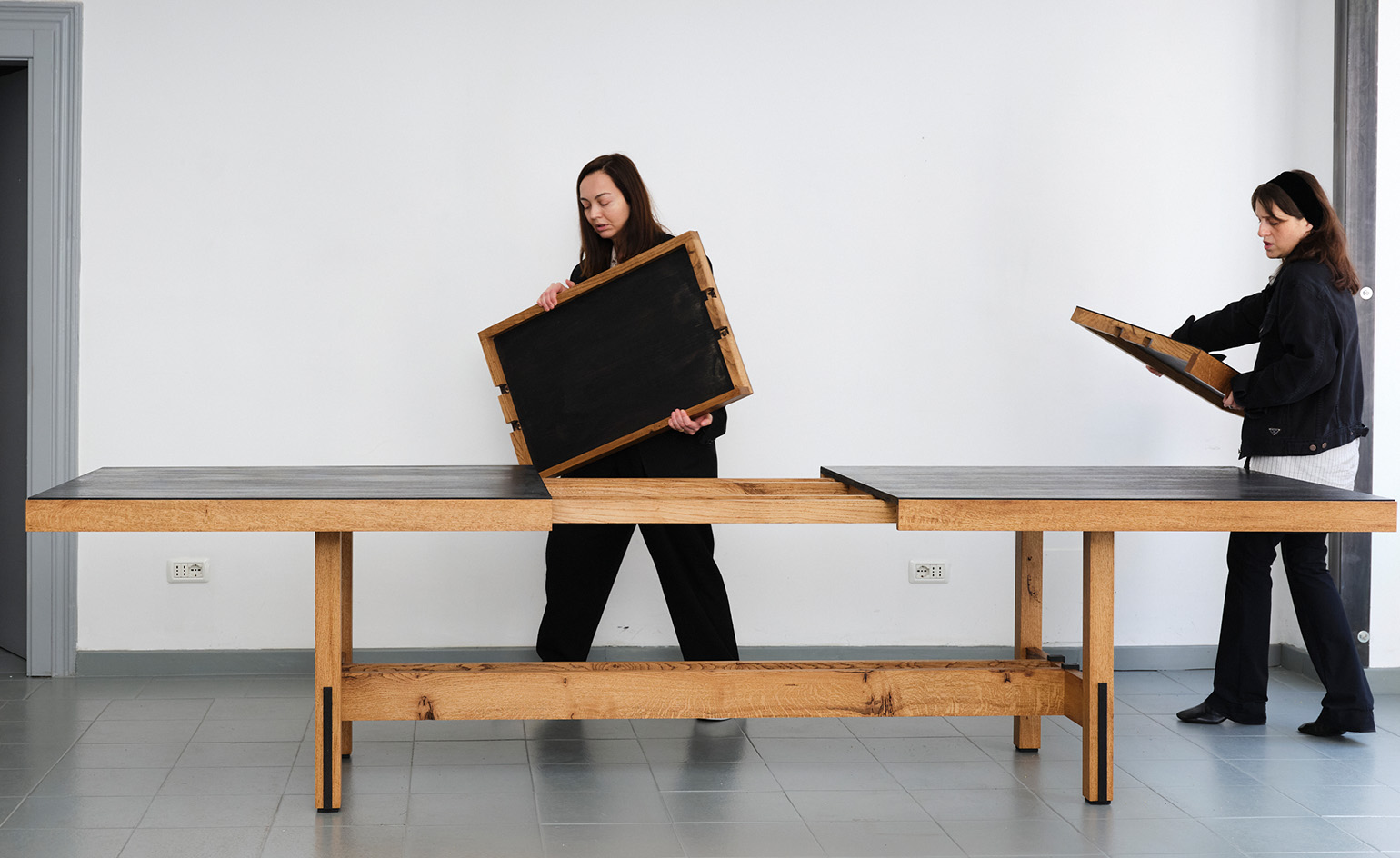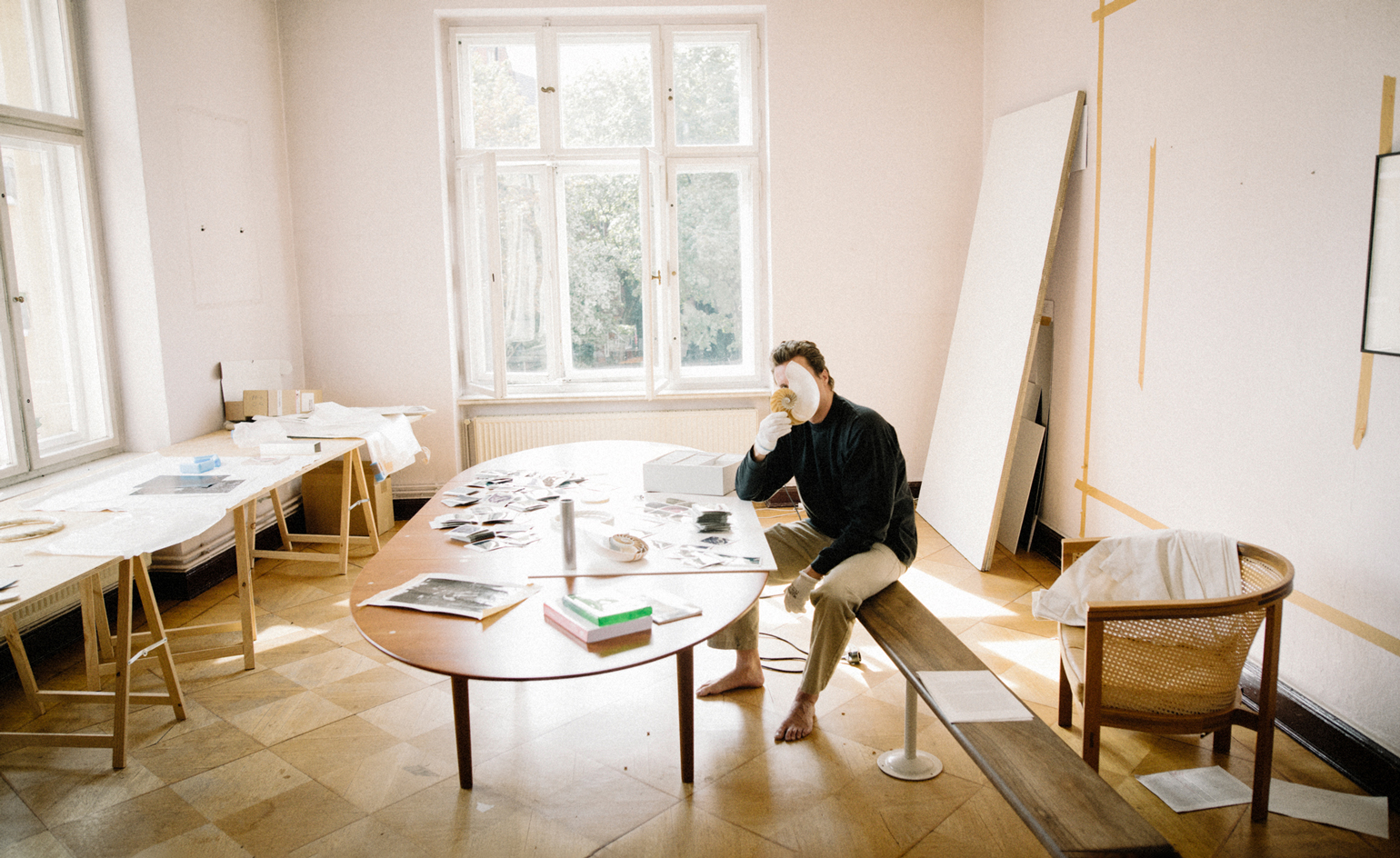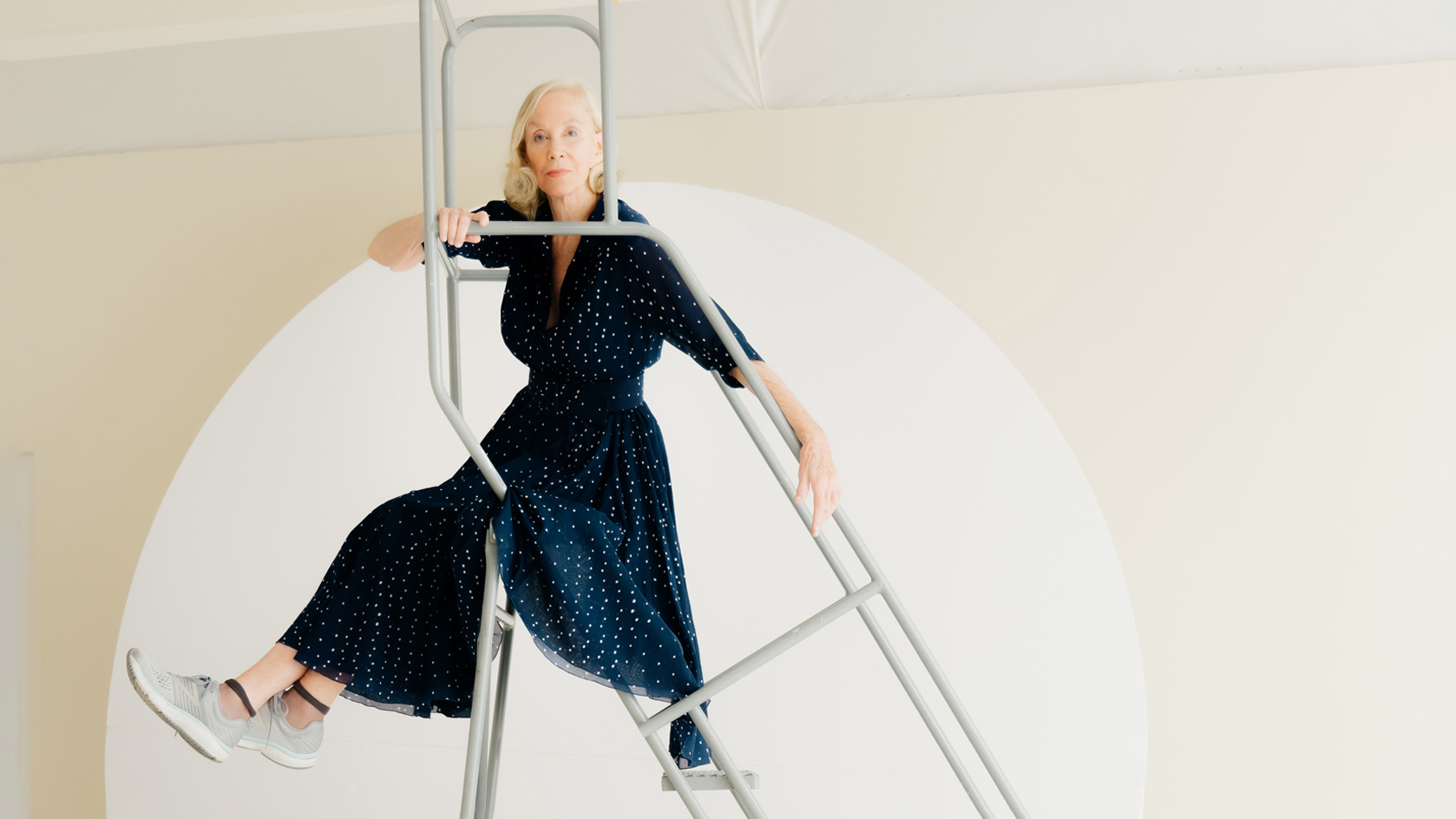Martin Parr on chronicling modern passions and Düsseldorf’s hobby-gardeners
The British photographer is the subject of his most comprehensive retrospective to date at NRW-Forum, which includes a new series of portraits of local allotment gardens created especially for the exhibition

A blonde woman on a beach chair, working on her holiday tan. Her eyes are covered to protect them from the sun, her legs are slightly apart. Was this photograph taken by a voyeur from the foot of her lounger? No. Martin Parr captured this scene in 2000 on Knokke beach in Belgium. By focusing on the grains of sand sticking to the young woman’s right big toe, he redirects our gaze to this seemingly insignificant detail, shifting the narrative and lending it a poetic sense.
Parr is one of the most important documentary photographers working today. Now, NRW-Forum in Düsseldorf is putting on the largest retrospective ever of Parr’s work, comprising 400 of his photographs. The exhibition, which runs until 10 November, includes some new and several early works being exhibited for the first time.
‘If I get ten good pictures a year, it’s a good year,’ says Parr, who is in Düsseldorf for the opening of this exhibition. The British photographer depicts the leisure and consumer behaviour of the western world, sometimes in its extreme manifestations. He is a chronicler of modern passions: ‘When people laugh and cry at the same time when looking at my pictures, that’s precisely the reaction the pictures evoke in me. The things are neither fundamentally good, nor bad. I am always interested in portraying both extremes.’

Knokke, Belgium, 2001, by Martin Parr.
Parr’s skill consists in being able to create a composed image out of a fleetingly captured moment. A cruise tourist dripping with jewellery in Yucatán, an Asian travel group in rank and file in front of the Acropolis, rain-soaked hikers in plastic ponchos at Machu Picchu. No journey is too onerous for the 67-year-old when it comes to encapsulating the absurdity of our world.
But Parr is not only interested in consumers, he is also interested in the consumer goods themselves. His still lifes are iconic: doughnuts with garish icing, cheap watches with Madonna clock faces. A society saturated in kitsch and trash is reflected in Parr’s colours, which seem to have been applied too thickly. It is aided by a stylistic device that has accompanied him for decades: the flash. He calls the effect ‘kiss of light’, exposing these scenarios in a merciless glow.
‘When people laugh and cry at the same time when looking at my pictures, that’s precisely the reaction the pictures evoke in me’
Is Parr an aloof misanthrope? Not at all. Rather, he is a close observer. The gaze with which he inspects the world is precise, sociological. The close-ups may seem ruthless, the framing may be discomfiting, while irony and British humour characterise Parr’s photographic work. But mean or malicious? ‘I love people,’ he says. And you know he is genuine.
Especially for this exhibition at NRW-Forum, he shot portraits of 80 Düsseldorf hobby-gardeners in their allotments. During the opening, wearing a check shirt and Birkenstocks, he mingles with the hobby-gardeners who have come out in force. He could well be one of them.
In addition to the series Kleingärtner (Allotment Gardeners), curator Ralf Goertz chose works from Think of England (1996-2003), Luxury (1997-2011) and Common Sense (1999). The black-and-white images from Parr’s debut works Bad Weather (1975-1982) are exhibited in Düsseldorf for the first time on this scale. ‘My focus was on key series,’ notes Goertz.

Installation view of ‘Martin Parr Retrospective’ at NRW-Forum, Düsseldorf. © NRW-Forum Düsseldorf.
And it’s in this sense that he also picked The Last Resort (1983-1986) Parr’s first series of colour photographs, shot in the seaside resort of New Brighton, which marked his artistic breakthrough. The British precariat in their Sunday best enjoying the weekend and escaping from their daily grind: the reality however, consists of junk food, whining children and consumer waste. It seems as though Parr is searching for the ugly in the beautiful, but also encountering the beautiful in the ugly.
Is it okay to criticise mass tourism, the greenhouse effect and the western world’s disregard for sustainability in an entertaining way? Parr thinks so. Humour keeps us from thinking about things in a one-dimensional way. What does he do with his own free time? ‘I don’t have any. I don’t believe in leisure time,’ says Parr with a short laugh. He’s going to Scotland next week. He’ll also be doing landscape shots there. ‘This is going to be difficult for me. I don’t like photographing beautiful things.’

Chichen Itza, Mexico, 2002, by Martin Parr.

© NRW-Forum Düsseldorf.

Martin Parr kicks back at his Düsseldorf survey. © NRW-Forum Düsseldorf.

© NRW-Forum Düsseldorf.
INFORMATION
‘Martin Parr Retrospective’, until 10 November, NRW-Forum. nrw-forum.de; martinparr.com
ADDRESS
Wallpaper* Newsletter
Receive our daily digest of inspiration, escapism and design stories from around the world direct to your inbox.
NRW-Forum
Ehrenhof 2
40479 Düsseldorf
-
 Everything you need to know about Italy's Lake Maggiore, according to Formafantasma
Everything you need to know about Italy's Lake Maggiore, according to FormafantasmaFrom baroque gardens to panoramic views, Andrea Trimarchi and Simone Farresin show us around this Italian escape
By Sofia de la Cruz Published
-
 In Milan, Rooms Studio examines Georgia’s shifting social landscape
In Milan, Rooms Studio examines Georgia’s shifting social landscapeExpandable tables that reference recent government protests and lamps held together with ‘chewing gum’ feature in the Tbilisi-based studio’s Milan Design Week 2025 installation
By Dan Howarth Published
-
 The best fashion moments at Milan Design Week 2025
The best fashion moments at Milan Design Week 2025In this ongoing report, Scarlett Conlon discovers the finest fashion moments at Salone del Mobile and Milan Design Week 2025, from Loewe’s artist-designed teapots to Saint Laurent’s celebration of Charlotte Perriand
By Scarlett Conlon Published
-
 ‘Life is strange and life is funny’: a new film goes inside the world of Martin Parr
‘Life is strange and life is funny’: a new film goes inside the world of Martin Parr‘I Am Martin Parr’, directed by Lee Shulman, makes the much-loved photographer the subject
By Hannah Silver Published
-
 Cyprien Gaillard on chaos, reorder and excavating a Paris in flux
Cyprien Gaillard on chaos, reorder and excavating a Paris in fluxWe interviewed French artist Cyprien Gaillard ahead of his major two-part show, ‘Humpty \ Dumpty’ at Palais de Tokyo and Lafayette Anticipations (until 8 January 2023). Through abandoned clocks, love locks and asbestos, he dissects the human obsession with structural restoration
By Harriet Lloyd-Smith Published
-
 Year in review: top 10 art interviews of 2022, chosen by Wallpaper* arts editor Harriet Lloyd-Smith
Year in review: top 10 art interviews of 2022, chosen by Wallpaper* arts editor Harriet Lloyd-SmithTop 10 art interviews of 2022, as selected by Wallpaper* arts editor Harriet Lloyd-Smith, summing up another dramatic year in the art world
By Harriet Lloyd-Smith Published
-
 Yayoi Kusama on love, hope and the power of art
Yayoi Kusama on love, hope and the power of artThere’s still time to see Yayoi Kusama’s major retrospective at M+, Hong Kong (until 14 May). In our interview, the legendary Japanese artist vows to continue to ‘create art to leave the message of “love forever”’
By Megan C Hills Last updated
-
 Antony Gormley interview: ‘We’re at more than a tipping point. We’re in a moment of utter crisis’
Antony Gormley interview: ‘We’re at more than a tipping point. We’re in a moment of utter crisis’We visit the London studio of British sculptor Antony Gormley ahead of his major new show ‘Body Field’ at Xavier Hufkens Brussels
By Harriet Lloyd-Smith Last updated
-
 Photographer Maisie Cousins on nostalgia, impulsive making and ‘collecting useless things’
Photographer Maisie Cousins on nostalgia, impulsive making and ‘collecting useless things’Explore the vision of British artist Maisie Cousins in ‘Through the lens’, our monthly series spotlighting photographers who are Wallpaper* contributors
By Sophie Gladstone Last updated
-
 Rashid Johnson in Menorca: a journey through migration, longing and togetherness
Rashid Johnson in Menorca: a journey through migration, longing and togethernessWe visited Rashid Johnson’s Brooklyn studio ahead of the artist’s show at Hauser & Wirth Menorca, which contemplates drift – physical and emotional
By Osman Can Yerebakan Published
-
 Step inside the kaleidoscopic universe of Pipilotti Rist
Step inside the kaleidoscopic universe of Pipilotti RistSwiss artist Pipilotti Rist, who headlines Wallpaper’s November 2022 issue, has transformed the way we see, with a poetic yet playful practice spanning three decades. Here, and in a special portfolio, she reveals how she has liberated video art from its conventions, imbued the digital realm with emotion, animated public spaces, and harnessed the healing powers of colour
By Jessica Klingelfuss Last updated